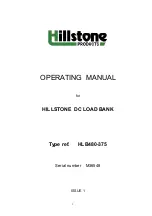
38-31
Cisco Catalyst Blade Switch 3120 for HP Software Configuration Guide
OL-12247-01
Chapter 38 Configuring IP Unicast Routing
Configuring OSPF
Use the no form of these commands to remove the configured parameter value or return to the
default value.
Configuring OSPF Area Parameters
You can optionally configure several OSPF area parameters. These parameters include authentication for
password-based protection against unauthorized access to an area, stub areas, and not-so-stubby-areas
(NSSAs). Stub areas are areas into which information on external routes is not sent. Instead, the area
border router (ABR) generates a default external route into the stub area for destinations outside the
autonomous system (AS). An NSSA does not flood all LSAs from the core into the area, but can import
AS external routes within the area by redistribution.
Route summarization is the consolidation of advertised addresses into a single summary route to be
advertised by other areas. If network numbers are contiguous, you can use the area range router
configuration command to configure the ABR to advertise a summary route that covers all networks in
the range.
Note
The OSPF area router configuration commands are all optional.
Beginning in privileged EXEC mode, follow these steps to configure area parameters:
Step 11
ip ospf database-filter all out
(Optional) Block flooding of OSPF LSA packets to the interface. By
default, OSPF floods new LSAs over all interfaces in the same area,
except the interface on which the LSA arrives.
Step 12
end
Return to privileged EXEC mode.
Step 13
show ip ospf interface [interface-name]
Display OSPF-related interface information.
Step 14
show ip ospf neighbor detail
Display NSF awareness status of neighbor switch. The output
matches one of these examples:
•
Options is 0x52
LLS Options is 0x1 (LR)
When both of these lines appear, the neighbor switch is NSF
aware.
•
Options is 0x42—This means the neighbor switch is not NSF
aware.
Step 15
copy running-config startup-config
(Optional) Save your entries in the configuration file.
Command
Purpose
Command
Purpose
Step 1
configure terminal
Enter global configuration mode.
Step 2
router ospf process-id
Enable OSPF routing, and enter router configuration mode.
Step 3
area area-id authentication
(Optional) Allow password-based protection against unauthorized
access to the identified area. The identifier can be either a decimal
value or an IP address.
Step 4
area area-id authentication message-digest (Optional) Enable MD5 authentication on the area.











































